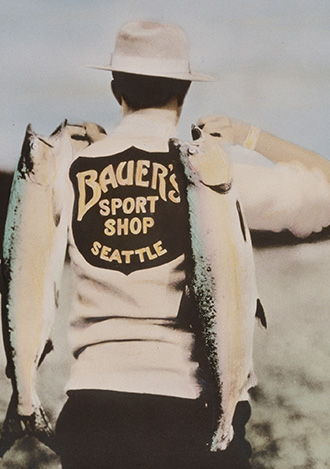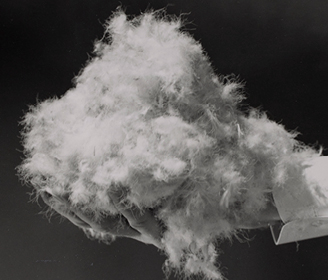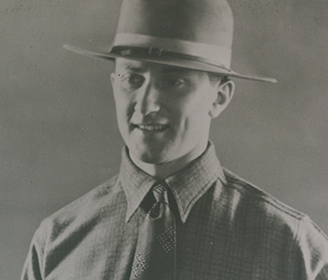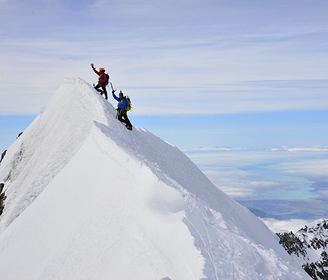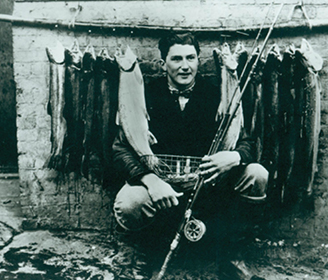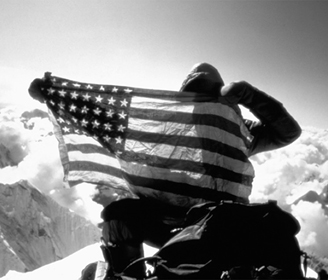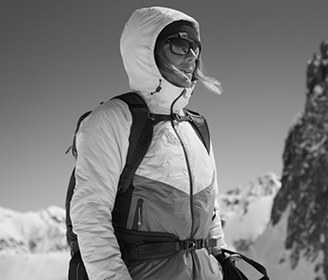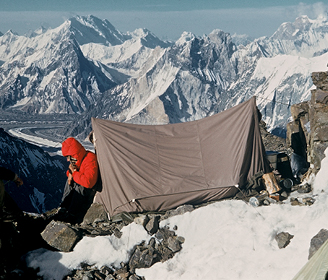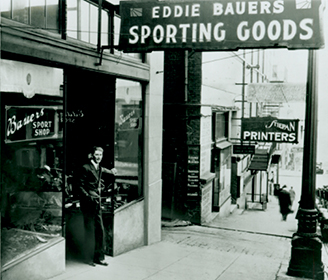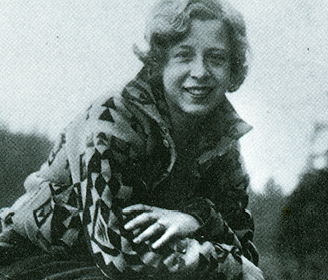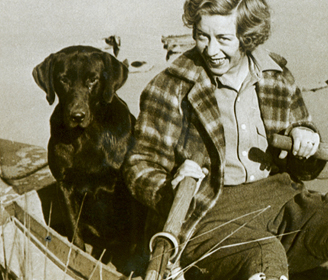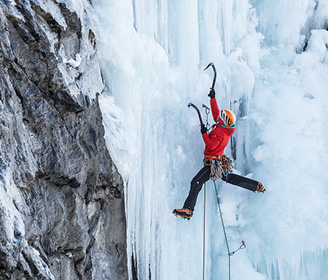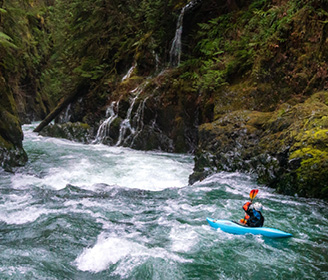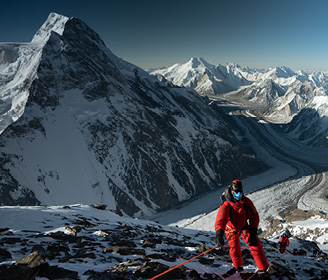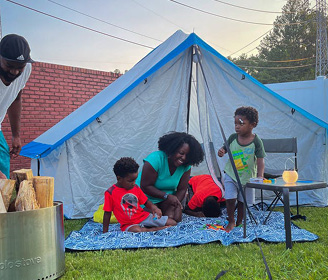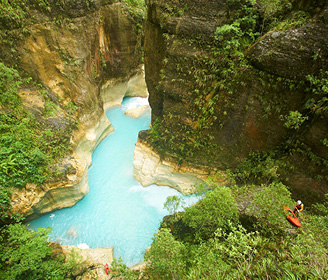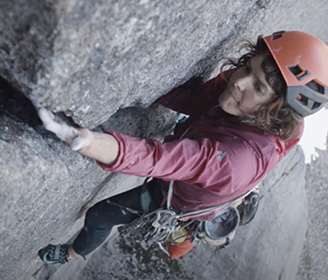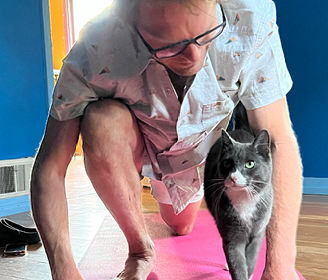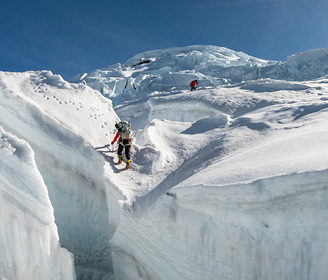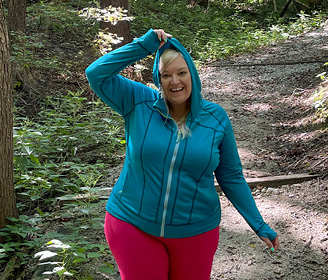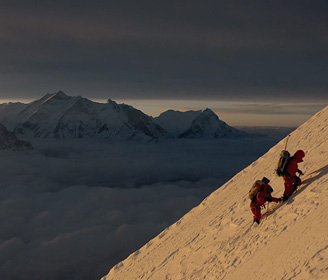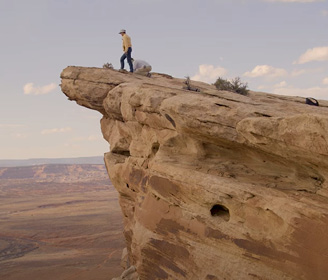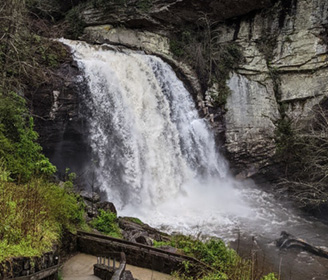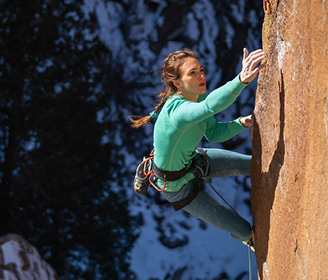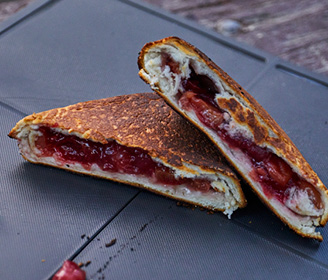Sometimes the simplest and most powerful innovations come directly from nature—down is the perfect example.
Each cluster of down—the ultra-soft, fine layer of feathers hidden underneath ducks’ and geese’s thicker, outer feathers—is an open, three-dimensional structure. When used as insulation in clothes or sleeping bags, thousands of down clusters create an interlocking latticework that traps a lot of air. Your body heat then warms the trapped air, surrounding you with a layer of your own warmth.

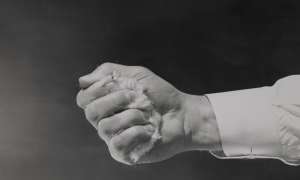
These scans from the Eddie Bauer archive demonstrate the compressible power of down.
Among all of Eddie Bauer’s innovations, awards, and achievements, one thing has connected the brand for over 100 years. From nymph flies tied in the window of Eddie’s first storefront to 800 fill-power down suits on the top of the world, feathers have been there for it all.
EDDIE’S TACKLE SHOP
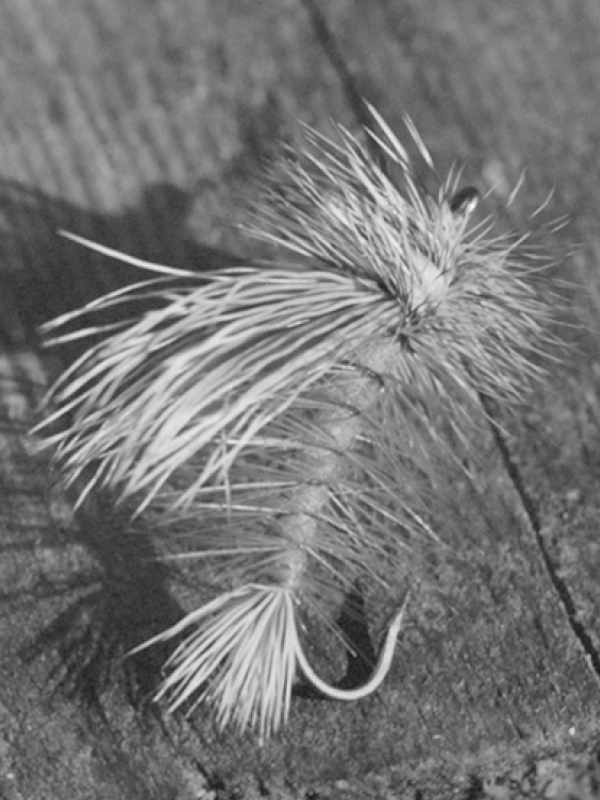
Though known primarily as the insulation that gives puffy jackets their signature puff, down and other feathers are also a key element of many fly-fishing lures, or flies. Thus, Eddie’s early exposure to down was thanks to his love of hunting and fishing.
In 1924, two years after opening Eddie Bauer’s Sport Shop, Eddie was approached by his friend Isabel McDonald. McDonald, a Scottish immigrant and expert fly tier, wanted to work for him, tying and selling her flies at his store.
Though he couldn’t yet hire her as an employee, Eddie made McDonald a deal: she could set up a workbench in his window, tie her flies, and sell them herself. All the profits would be hers, and Eddie’s business would benefit from the exposure and interest generated by her intricate flies.
Within a year, McDonald’s business had taken off so dramatically that in order to meet demand she and Eddie started an entirely new, mail-order tackle business and hired a team of women to tie flies at home. In 1925, Eddie Bauer Tackle Makers began ordering feathers in huge quantities, and Eddie’s passion for fishing kicked off a nearly century-long relationship with down and feathers.
SHUTTLECOCKS
What do fly-fishing, mountaineering, and badminton have in common? They all depend on feathers.
Eddie’s first business, opened in 1920, was Eddie Bauer’s Tennis Shop, where he sold and restrung tennis rackets. It wasn’t a leap then for Eddie to pivot from tennis to another racket sport. In the early 1930s, with the country firmly in the grip of the Great Depression, a group of badminton players asked for Eddie’s help in procuring shuttlecocks, the small, feather-adorned balls of cork and leather that players hit back and forth. He saw the opportunity to corner the market and didn’t hesitate.
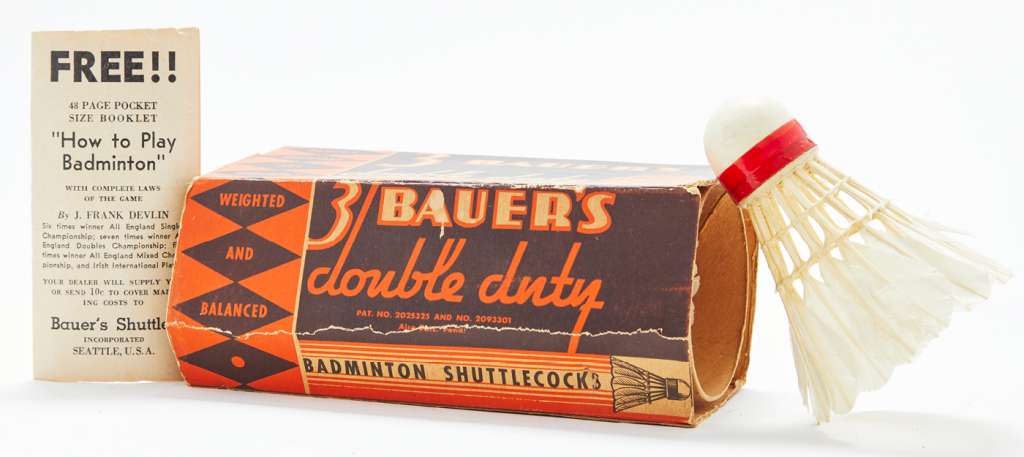
Within a couple of years of designing and manufacturing shuttlecocks, Eddie held two patents: one for his new shuttlecock, and another for his innovative means of weighing and standardizing each “birdie.”
By the end of the decade, Eddie’s feather-tailed shuttlecocks were sought after by enthusiasts across the country and were used in national tournaments.
SKYLINER JACKET
In 1935, a near-death experience led Eddie to design America’s first down jacket and kicked off a new era of innovation in insulation.
That January, Eddie and a friend took a fishing trip to a remote river valley on Washington’s Olympic Peninsula. Eddie’s friend took their heavy, wool coats and extra gear while he shouldered a hundred pounds of fish and headed up the cliff.
Upon reaching the top of his climb, exhausted and hypothermic from the combination of snow, the wet fish, and his own freezing sweat, Eddie fell asleep leaning against a tree. Luckily, his friend found him in time, dragged him to the car, and they made it home safe.
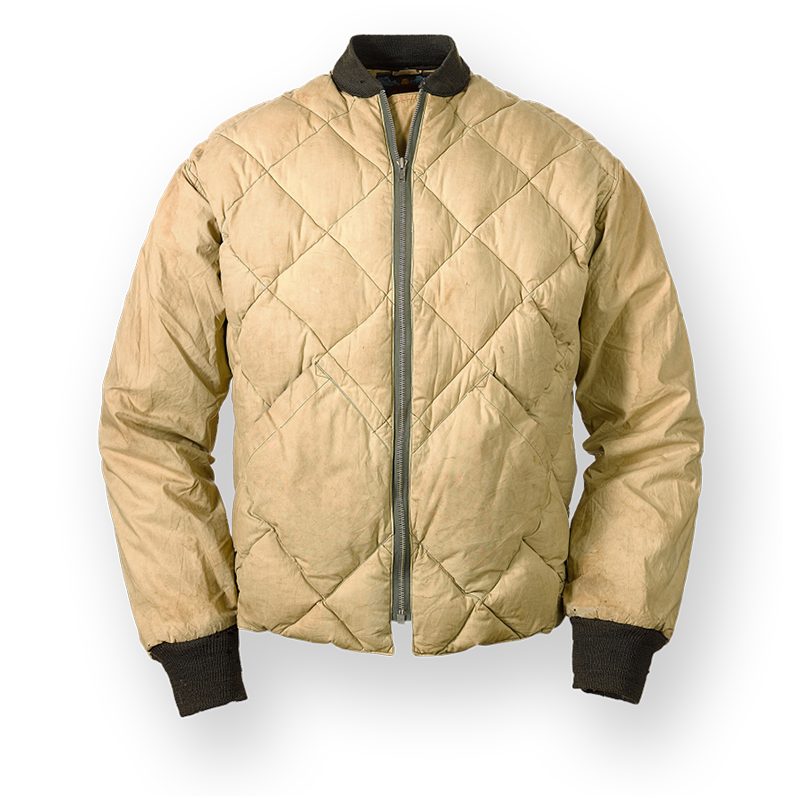
Eddie, knowing what could have happened had he been alone, immediately set about finding an insulation that would be warm enough for winter adventures while light and breathable enough to wear during heavy exertion.
After a decade of working with feathers for his tackle and shuttlecock businesses, Eddie’s answer was right in front of him: down.
The resulting jacket, the Skyliner, became so popular that he had to form his own manufacturing business—Arctic Feather & Down Co.—to keep up with demand.
DOWN AND THE WAR EFFORT
After Eddie spent almost two decades manufacturing outdoor products using down feathers, the start of WWII led the government to freeze all commercial use of feathers and down. Manufacture of flies, shuttlecocks, and down jackets, all of which relied on feathers, ground to a halt.
At the same time, the Army needed sleeping bags. A lot of them. In 1942, Eddie took an Army contract to make 1,000 down sleeping bags. Thanks to his deep knowledge of building outdoor equipment using down, he made the bags faster and of higher quality than other government contractors. By the end of 1942, his factory was running 24 hours a day to fulfill an order for 220,000 sleeping bags.
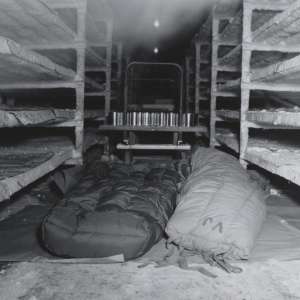
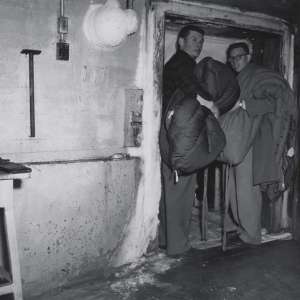
Testing sleeping bags in freezing conditions.
Eddie’s success and expertise didn’t go unnoticed. One day while he was working on the sleeping bag order, he answered a call from the US Army Air Forces’ Materiel Lab. They’d heard of this expert on insulation and needed his help to design and build a high-altitude flight suit that could keep a pilot warm at -70°F while seated for 3 hours, and keep that pilot and 25 pounds of gear afloat for 24 hours.
Never one to shrink from a challenge, Eddie used his expertise to design the only down-insulated flight suit—the B-9 Parka and A-8 Flight Pants—that met the requirements and passed the rigid laboratory tests.
EXPEDITION OUTFITTERS
Though he was always a hunter and fisherman first, in 1953, Eddie’s relationship with down took an expeditionary turn when a team of mountaineers asked him to design a parka worthy of an ascent of K2—the second tallest peak in the world.
The combination of intense cold, unpredictable weather, and oxygen deprivation found at extreme elevations necessitated a lightweight, but very warm layer, and again Eddie turned to down. Building on the success of the Skyliner Jacket he designed the Kara Koram Parka.
Upon inspecting the finished product, the expedition leader proclaimed it, “the finest article of cold-weather, high-altitude equipment I have ever seen.” While the expedition itself was unsuccessful, the parka performed admirably.
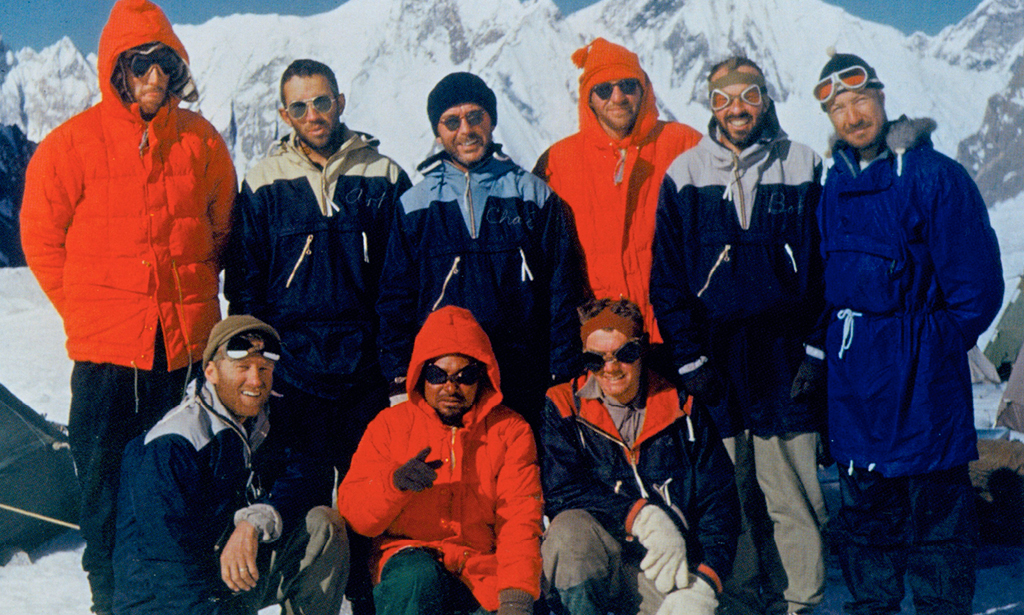
In 1958, several members of the failed K2 climb set out to make the first ascent of Gasherbrum I, another peak in the Karakoram. Again, they approached Eddie, hoping he could lighten the original Kara Koram parka.
Eddie swapped out the original cotton face fabric for the ripstop nylon he’d been using in his new down sleeping bags. The resulting weight savings allowed him to add more down, making the parka both lighter and warmer than the original without sacrificing durability.
This time, the expedition succeeded in their first ascent of Gasherbrum I, and down still remains the go-to insulation for mountaineers.
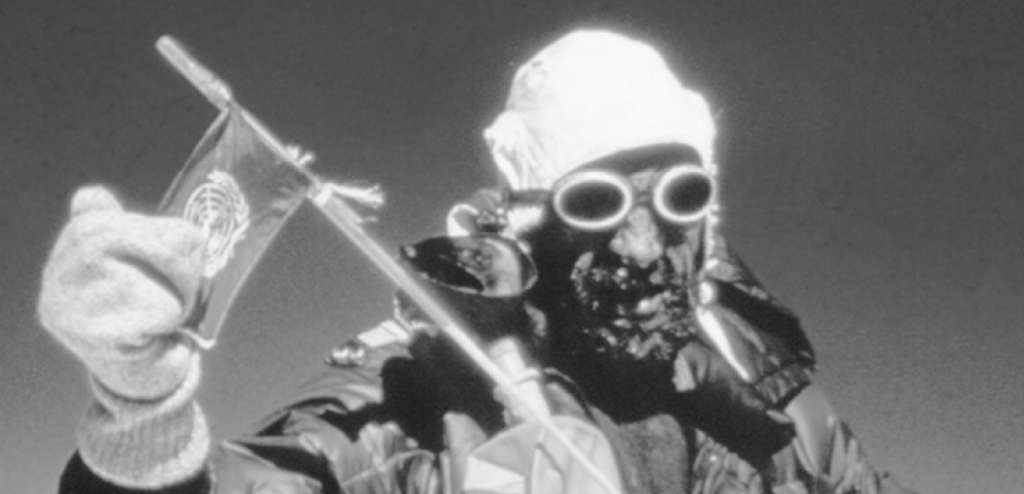
CONTINUING INNOVATION
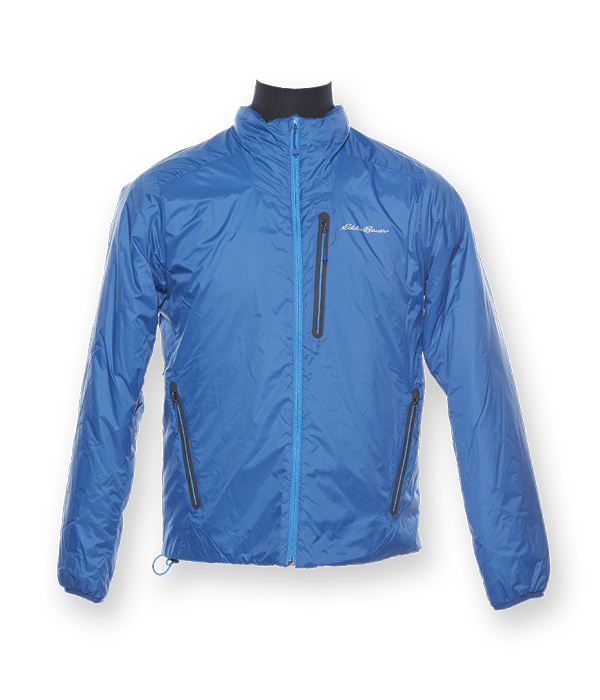
Since Eddie first experimented with down, it has proven the lightest, warmest, and most durable insulation available. Synthetic alternatives can’t match down’s ability to trap warmth, compress to small volumes for transport, and rebound undamaged when needed.
But that doesn’t mean there isn’t room for innovation. Enter the Eddie Bauer EverTherm Jacket. Introduced in 2017, the EverTherm is the first jacket to use Thindown®, a revolutionary down fabric designed and manufactured in Italy.
Instead of using individual down clusters, Thindown® bonds the feathers between two ultrathin layers of fabric to create a single sheet of insulation that maintains all the benefits of down without the need for baffles or quilting. No cold spots, no feathers leaking out—just ultralight, breathable warmth. When he first started working with down and feathers, Eddie had no idea what was in store for him. One hundred years later, down maintains its place of honor, helping everyone from high-altitude mountaineers to weekend warriors get outside in style and comfort.
Visit the Eddie Bauer Historical Archive
Learn more about the history of Eddie Bauer and read more stories like the one above.

